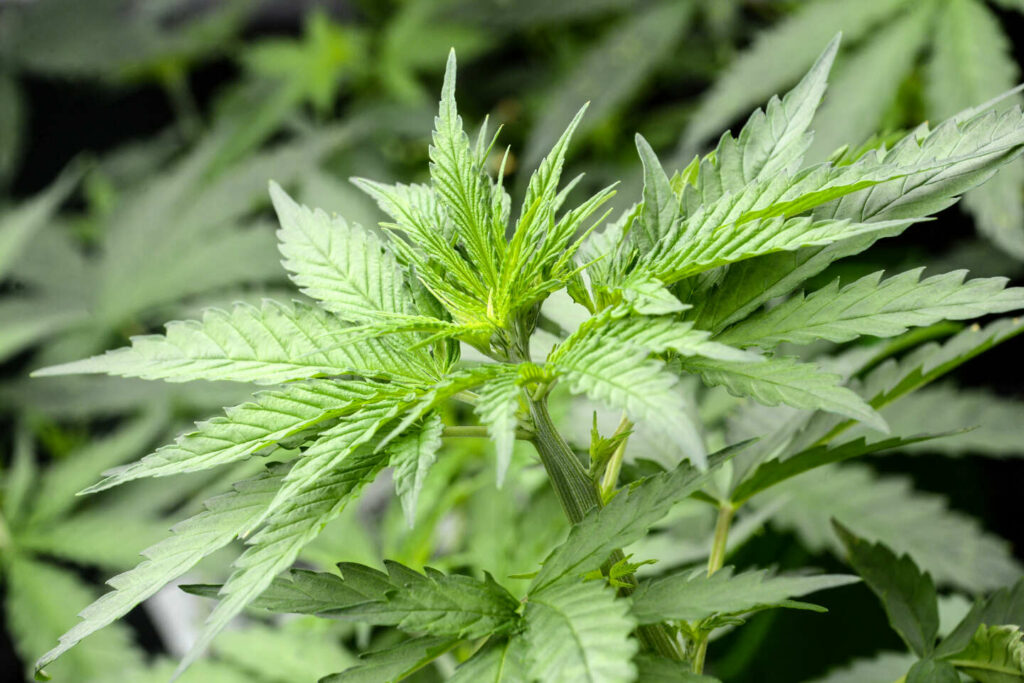Cannabis
How to Top a Weed Plant – Togo Weed
How to Top a Weed Plant: Mastering the Art of Topping Cannabis
Introduction
The cultivation of cannabis has evolved into a fascinating and intricate art form. Growers continually seek to optimize their cannabis plants for better yields, potency, and overall health. One such technique that plays a vital role in achieving these goals is topping. Topping a weed plant involves the strategic removal of the main growth tip to encourage lateral growth and increased bud production. In this comprehensive guide, we will explore the benefits of topping cannabis, the ideal timing for this technique, and the steps to master the art of topping.
Understanding Topping Cannabis
Topping is a form of high-stress training (HST) that involves pruning the main stem of a cannabis plant during its vegetative phase. The goal is to create multiple main colas, rather than a single dominant one. Topping can be a game-changer for both indoor and outdoor growers, as it promotes a bushier plant structure and maximizes light penetration, ultimately leading to increased bud production.
Benefits of Topping Cannabis
Topping cannabis offers a range of benefits that contribute to healthier plants and higher yields. Here are some of the advantages of incorporating this technique into your cultivation process:
- **Increased Yields**: By removing the main apical bud, topping redirects the plant’s energy to the growth of multiple colas. This results in more bud sites and, subsequently, increased yields during the flowering stage.
- **Enhanced Canopy Uniformity**: Topped plants tend to have a more even canopy, ensuring that all parts of the plant receive adequate light. This minimizes shade and maximizes photosynthesis, leading to better growth and higher yields.
- **Improved Air Circulation**: A bushier, topped plant allows for better air circulation. Improved airflow reduces the risk of mold and mildew development, which can be detrimental to the plant’s health.
- **Height Control**: Topping can help control the height of your cannabis plant, making it ideal for indoor cultivation where space is limited.
- **Enhanced Light Penetration**: When the canopy is more open and light can penetrate deeper into the plant, it stimulates the growth of lower branches and bud sites, increasing the overall yield.
Timing: When to Top Your Cannabis Plants
Timing is crucial when it comes to topping cannabis. The ideal time to top your plants is during the vegetative phase, typically when they have developed three to five nodes (sets of leaves). Nodes are the points where leaves, stems, and branches meet. Topping at this stage allows for ample recovery time before the flowering stage, ensuring that the plant can redirect its energy toward producing more colas.
The Steps to Master Topping Cannabis
Topping cannabis may seem intimidating at first, but with a bit of practice and the right approach, it can become a routine part of your cultivation process. Here are the steps to master the art of topping:
- **Prepare Your Tools**: You will need a clean and sharp pair of pruning shears or scissors. Ensure they are sanitized to reduce the risk of infection when cutting the plant.
- **Identify the Growth Tip**: Examine your cannabis plant to locate the main growth tip, which is typically the highest point of the plant. This is the part you will be removing.
- **Choose the Right Node**: Select a node that is a few inches below the main growth tip. This will be the point where you make the cut. Choose a node that has healthy, well-developed leaves and stems.
- **Make the Cut**: Using your sanitized pruning shears or scissors, make a clean and precise cut just above the chosen node. Ensure that the cut is smooth to minimize stress on the plant.
- **Allow for Recovery**: After topping the plant, it may experience some shock and stress. Give it time to recover and redirect its energy toward the development of new colas. This may take a few days to a week, depending on the health and vigor of the plant.
- **Monitor Growth**: As the plant recovers, you will notice new growth emerging from the node just below the cut. These new branches will eventually develop into main colas, contributing to increased yields.
- **Repeat as Needed**: Some growers choose to top their plants multiple times during the vegetative phase, creating even more colas. This is known as “FIMing” (short for “f**k, I missed”) and involves cutting the main growth tip slightly differently to encourage multiple branch growth.
Caring for Topped Cannabis Plants
Once you’ve successfully topped your cannabis plants, it’s essential to continue providing them with proper care to ensure a successful growth cycle. Here are some additional tips for nurturing topped cannabis plants:
- **Training**: Alongside topping, consider other training techniques such as low-stress training (LST) or super cropping. These methods can further optimize the plant’s shape and canopy.
- **Nutrient Management**: Adjust your nutrient regimen to accommodate the increased energy demand from the plant. As your cannabis plant develops more colas, it will require additional nutrients to support its growth.
- **Pruning**: Throughout the vegetative phase and early flowering stage, continue to prune away unnecessary lower growth and foliage to maximize energy distribution to the main colas.
- **Lighting**: Ensure your cannabis plants receive the appropriate amount of light. Topped plants benefit from even light distribution across all their colas.
- **Support**: As your cannabis plants mature and develop heavy colas, use stakes or trellises to support the branches and prevent breakage.
Conclusion
Topping cannabis is a valuable technique that empowers growers to optimize their yields, plant structure, and overall growth. By redirecting the plant’s energy and encouraging the development of multiple colas, topping can significantly increase the quantity and quality of your cannabis harvest. Weed Online
As you embark on the journey of mastering the art of topping, remember the importance of proper timing, precise cuts, and attentive care for your cannabis plants.


